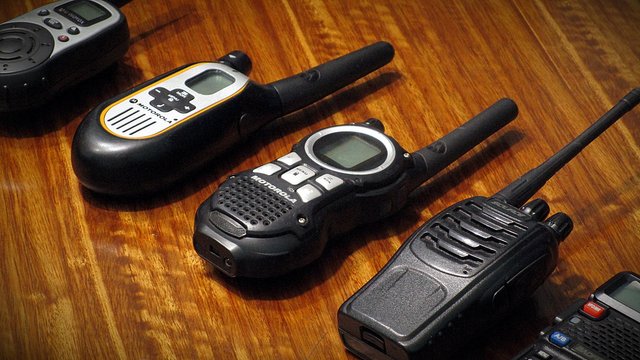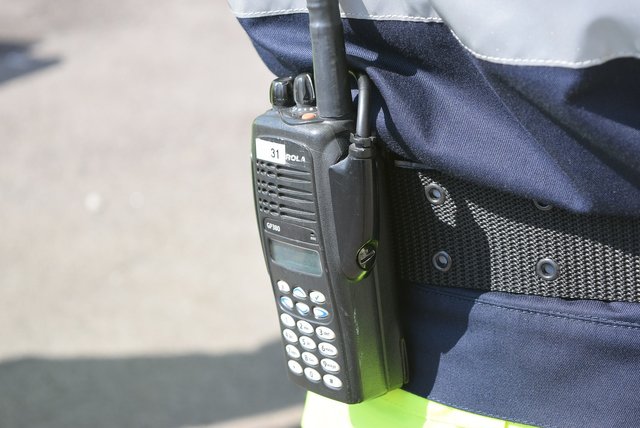
Land mobile radios or LMRs have been used for decades in a variety of industries and applications for voice communications.
Multiple emergency response agencies rely on LMRs to communicate and coordinate their efforts for one incident. For instance, in the event of a fire, law enforcement, emergency medical services, and health care professionals all have to work together with the fire department and disaster response managers to get everyone safely out of the burning building. If a breakdown of communication happens, it could affect how these groups respond, putting lives and property at greater risk.
But with the advancements in digital communication technology, particularly the developments in mobile devices and their ability to transmit data at high speeds, land mobile radio systems may be seen as an aging technology. Are LMR systems still relevant?
Let’s take a look at the current state of LMRs in today’s digital-driven world, focusing on market trends, and determine the direction that these land mobile radio systems are going. Are LMRs--like the analog telephones and dial-up modems of yore--headed to the museum or will they continue to get a firm foothold in the market amid new communication technology?
Where are LMR systems used?

LMR Systems On The Way Out, Or Here To Stay? You wouldn't argue more about the bright future of land mobile radio systems across the world when you look at the ongoing technological advancements in the advanced telecommunication industry and the demand for these services. They are highly in demand, thanks to new-breed of technology been introduced to faced out obsolete ones. It is still the way forward for strategic emergency response system for all government setups e.g. Military and security agency like FBI and CIA.
A land mobile radio system is a kind of wireless communication system. LMR systems are intended to provide reliable and secure voice communications, and are typically used by emergency response teams (tribal, local, state, federal), companies doing public works, as well as the military for critical voice communications and low-speed data transmissions.
An LMR system commonly consists of handheld portable radios, mobile radios for vehicles, base stations, a network to connect the different base stations, and signal repeaters to increase the range of the devices on the same communications system.
The use of LMRs can be seen in the following applications:
- Public safety
- Emergency and medical services
- Homeland security
- Fire department
- Military and defense
- Manufacturing, retail, and commercial industries
- Utility, mining, construction, and transportation
- Tourism, entertainment, events
How is the LMR market doing?
In May 2017, Allied Market Research published the Land Mobile Radio System Market Report, which cites LMR revenues and growth rates across major regions and forecasts that the LMR system market will continue to grow.According to the report, the global market for LMR systems is estimated to reach $43,707 million by 2022, registering a compound annual growth rate or CAGR of 17.1 percent from 2016 to 2022. The report points to North America as being the key contributor to LMR systems’ global market revenue, with an expected $15,674 million in revenue generation.
The estimates presented in the report are based on LMR market trends for 2015, in which the portable or handheld LMR system topped the device market, and North America accounted for $5,595 million in the global LMR market revenue--the highest share at 39 percent.
The market for portable LMR systems are expected to generate $26,880 million with a CAGR of 18.1 percent during the forecast period.
The report also cites that although land mobile radio systems are widely used in various fields, the limitations in terms of channel capacities, spectrum issues, as well as stringent government regulations hinder the growth of the LMR industry.
However, a rising demand for effective communication technologies in the Asia-Pacific (China, Japan, India, and other Asian countries) and LAMEA (Latin America, Middle East, Africa) regions, as well as the adoption of digital land mobile radio systems worldwide, may present opportunities for development and overall industry growth.
What improvements are being done on LMR systems?
Over time, many agencies using LMR systems have moved from basic, conventional radio systems such as two-way communications to complex trunked systems that are computer-controlled, enhancing LMR capabilities and allowing multiple individuals to share channels, make group calls, and provide high-quality audio.
The transition from analog to digital is a natural evolution to meet market demands and integrate new technology. Indeed, these improvements on LMR technology have enhanced the functionality, reliability, interoperability (the ability to communicate across different agencies) and spectral efficiency of both voice and low-speed data communications for public safety teams.
This transition is also pushing traditional LMR technology from a “critical communication technology” to a “critical intelligence technology.”
Technological developments in terms of improved handheld devices, mobile repeaters, and base operation solutions to ensure interoperability and provide secure communications are also being done to allow response teams to communicate in various situations and environments, especially in remote areas such as heavily forested and mountainous regions where radio signals can be obstructed.

Over the years, some of the top agencies using the land mobile radio systems have upgraded from the basic conventional radio systems like the popular two-way communications to advanced trunked systems are computer-controlled, enhancing LMR capabilities and allowing multiple individuals to share channels, interact through group calls, and provide high-quality audio output.
Can LMR systems really be used with digital communication technology?
Yes.
The latest development in the use of LMR networks has to do with how it’s used together with other forms of digital technology. In the United States, the First Responder Network Authority or FirstNet is working to launch the first nationwide public safety broadband network (NPSBN), which will use LMR systems for mission-critical voice communication as well as high-speed data services (through laptops, smartphones and other commercial LTE services/devices) to supplement LMR networks.
Upgrading infrastructures is a challenge that governments have to face in order to integrate various emerging communications technology with current LMR tech. FirstNet, for instance, will first leverage existing infrastructure “where it makes engineering and economic sense.”
The goal, FirstNet says, is to not only keep costs down, but also reduce the time it would take to build the infrastructure and procure the equipment needed for the NPSBN.
What does the future hold for LMR systems?
FirstNet, for one, sees the continued reliance on LMRs in emergency response settings. For its broadband-LMR network to actually work, it’s necessary for agencies focusing on public safety to maintain and/or upgrade their existing networks.
The U.S. Department of Homeland Security agrees:
“Without continued investment to operate and maintain LMR systems, emergency communications could be compromised.”LMR systems play a major and crucial role in delivering emergency response, and we see the technology not replaced by, but used in conjunction with other communications technology in emergency services, especially if other countries follow suit.
The way we see it, land mobile radio systems won’t be signing off anytime soon. These will continue to be relevant and are definitely here to stay, not only in terms of public safety and emergency services but in other applications as well.
Hi! I am a robot. I just upvoted you! I found similar content that readers might be interested in:
http://techatlast.com/lmr-systems/
Downvoting a post can decrease pending rewards and make it less visible. Common reasons:
Submit
Yeah, it was written by my humble self @cheetah :)
Downvoting a post can decrease pending rewards and make it less visible. Common reasons:
Submit
This is an interesting article. I've wondered about the future of LMR systems. I like keeping emergency communication systems clean and separate from the main communications grid.
BTW: I think the best way to handle articles that you've written for other sites is to paraphrase the article and end with a link to external source.
It is not just steemit that gets confused about which source is the original source. Google has the nasty habit of assuming that the social media site is the canonical source ... it then penalizes your private site for having duplicate content.
Downvoting a post can decrease pending rewards and make it less visible. Common reasons:
Submit